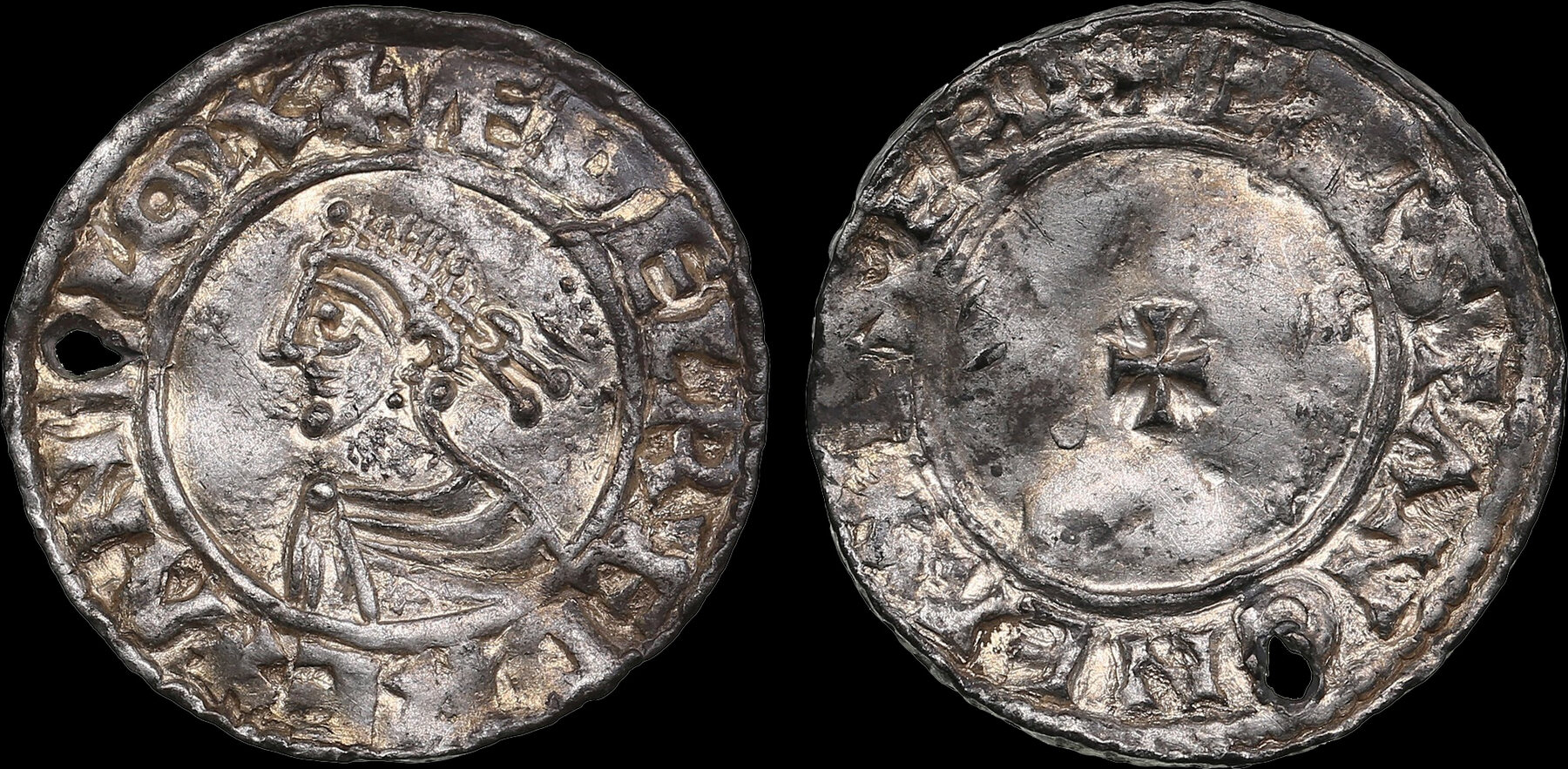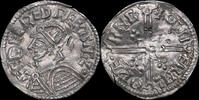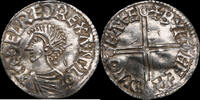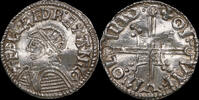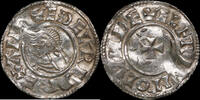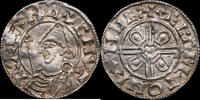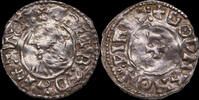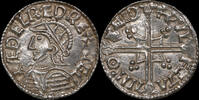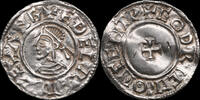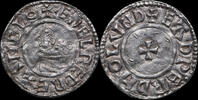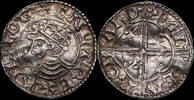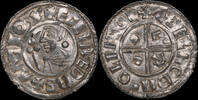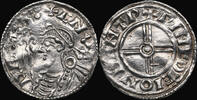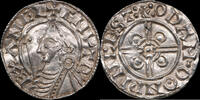MA-ID: 605102090
Customer feedback Numex OÜ
Excellent seller, highly recommended!
Thank You! Nice items for reasonable price, quick shipping! Excellent!!!
Ja, ich bin mit dem gekauften Geldschein vollig zufrieden. Danke.
M.Brindz...
Super Ware! Gerne wieder.
England / Exeter Penny Aethelred II (978-1016) Last Small Cross type, Eadstan XF
Numex OÜ 

9
On MA-Shops since 9 years
1195 ratings,
100 % Positive (last 24 months)
Worldwide shipping
416.14 £480,00 EUR
Import tax may be added
+ 4.33 £ shipping ( to United Kingdom )
Delivery time: 11 - 14 days
+ 4.33 £ shipping ( to United Kingdom )
| Customer Support +49 (0)2871 2180 383 |
| Payment methods |
| Wire Transfer |
Obv.: Diademed and draped bust left; “+ÆDELRED REX ANGLORX”.
Rev.: Short cross pattée; “+EATSTAN ON EAXCSER
Monayer: Eadstan
Hole!
Numismatic and Historic Analysis of the England Exeter Penny, Aethelred II (978–1016), Last Small Cross Type, Eadstan
Introduction
The Exeter Penny from the reign of Aethelred II (978–1016), classified as a Last Small Cross type and struck by the moneyer Eadstan, is a remarkable example of late Anglo-Saxon coinage. Graded XF (Extremely Fine) with a hole, cataloged as S# 1154 and N# 777, this silver coin weighs 1.71 grams. Featuring a diademed and draped bust on the obverse and a short cross pattée on the reverse, this coin reflects the economic challenges and political turmoil of Aethelred’s reign during the height of Viking invasions. Its production in Exeter, a significant minting center in southwestern England, and its well-preserved condition provide valuable insights into the Anglo-Saxon monetary system and the historical context of the early 11th century.
Historical Context
Aethelred II, often known as "the Unready" (from Old English unræd, meaning "ill-advised"), ruled England during a period of intense Viking raids and political instability. His reign was marked by repeated payments of Danegeld—tributes to appease Viking invaders—which placed significant strain on England’s economy and minting operations. The Last Small Cross type, introduced around 1009–1016, was one of Aethelred’s final coin designs, reflecting a return to simpler, earlier styles amid economic pressures and the need for rapid coin production to fund tributes.
Exeter, a fortified burh in Devon, was a key administrative and economic center in Anglo-Saxon England, with its mint producing coins that supported regional trade and royal obligations. The moneyer Eadstan, a common Anglo-Saxon name, was responsible for the coin’s quality, reflecting the structured system of named moneyers who ensured the integrity of coinage at regional mints. The coin’s hole suggests post-minting modification, likely for use as jewelry or a pendant, a common practice in medieval Europe, particularly in regions with Viking influence where coins were sometimes repurposed as ornaments.
The period of the Last Small Cross type coincided with escalating Viking attacks, culminating in the Danish conquest of England by Cnut in 1016. The coin’s production in Exeter highlights the city’s resilience as a minting center despite the threats facing the kingdom, underscoring the importance of regional mints in sustaining England’s economy.
Numismatic Description
Obverse
The obverse features a diademed and draped bust of Aethelred II facing left, a design that emphasizes royal authority through stylized portraiture. The inscription “+ÆDELRED REX ANGLORX” translates to “Aethelred, King of the English.” The use of Latin and the title “REX ANGLORX” asserts Aethelred’s sovereignty over England, even in the face of Viking challenges, reinforcing his legitimacy in a time of crisis.
Reverse
The reverse displays a short cross pattée, a compact and functional design that facilitated cutting the coin into halves or quarters for smaller transactions. The inscription “+EATSTAN ON EAXCSER” identifies Eadstan as the moneyer and Exeter (EAXCSER) as the mint. The XF grade indicates excellent preservation, with sharp details in the bust and inscriptions, though the hole suggests it was adapted for non-monetary use, possibly as a decorative item.
Material and Specifications
Struck in silver, the coin weighs 1.71 grams, slightly heavier than the standard Anglo-Saxon penny, possibly reflecting variations in minting practices or the need for higher-value coins during economic strain. Its silver content ensured its reliability in trade, critical in a period of frequent Viking tributes. The hole, while affecting its original monetary function, adds historical context, indicating its cultural significance beyond circulation.
Numismatic Significance
The Exeter Penny of Aethelred II is a testament to the resilience of the Anglo-Saxon monetary system during a period of crisis. The Last Small Cross type, with its simplified design, was likely a response to the need for efficient coin production to meet the demands of Danegeld payments and regional commerce. The coin’s production in Exeter underscores the city’s importance as a minting center in southwestern England, contributing to the kingdom’s economic stability despite external threats.
Cataloged as S# 1154 and N# 777, this coin is well-documented, making it a valuable piece for numismatic study. The hole, while a modification, enhances its historical narrative, suggesting its use as a personal adornment, possibly by Anglo-Saxon or Viking owners. The coin’s XF condition preserves the artistry of the diademed bust and the precision of the inscriptions, offering insight into the technical capabilities of the Exeter mint.
The coin also serves as a historical artifact of Aethelred’s final years, capturing the challenges of governing a kingdom under relentless Viking pressure. Its connection to Exeter reflects the regional dynamics of Anglo-Saxon England, where local mints played a critical role in sustaining economic activity amid national turmoil.
Conclusion
The Exeter Penny of Aethelred II, struck by Eadstan in the Last Small Cross type, is a significant relic of late Anglo-Saxon England. Its diademed bust, short cross pattée, and holed condition reflect the economic and political complexities of Aethelred’s reign, marked by Viking invasions and Danegeld payments. As a product of the Exeter mint, it highlights the city’s role in England’s monetary system and its resilience in a time of crisis. For numismatists and historians, this coin offers a tangible link to Aethelred’s troubled reign and the enduring legacy of Anglo-Saxon coinage on the eve of the Danish conquest.
Rev.: Short cross pattée; “+EATSTAN ON EAXCSER
Monayer: Eadstan
Hole!
Numismatic and Historic Analysis of the England Exeter Penny, Aethelred II (978–1016), Last Small Cross Type, Eadstan
Introduction
The Exeter Penny from the reign of Aethelred II (978–1016), classified as a Last Small Cross type and struck by the moneyer Eadstan, is a remarkable example of late Anglo-Saxon coinage. Graded XF (Extremely Fine) with a hole, cataloged as S# 1154 and N# 777, this silver coin weighs 1.71 grams. Featuring a diademed and draped bust on the obverse and a short cross pattée on the reverse, this coin reflects the economic challenges and political turmoil of Aethelred’s reign during the height of Viking invasions. Its production in Exeter, a significant minting center in southwestern England, and its well-preserved condition provide valuable insights into the Anglo-Saxon monetary system and the historical context of the early 11th century.
Historical Context
Aethelred II, often known as "the Unready" (from Old English unræd, meaning "ill-advised"), ruled England during a period of intense Viking raids and political instability. His reign was marked by repeated payments of Danegeld—tributes to appease Viking invaders—which placed significant strain on England’s economy and minting operations. The Last Small Cross type, introduced around 1009–1016, was one of Aethelred’s final coin designs, reflecting a return to simpler, earlier styles amid economic pressures and the need for rapid coin production to fund tributes.
Exeter, a fortified burh in Devon, was a key administrative and economic center in Anglo-Saxon England, with its mint producing coins that supported regional trade and royal obligations. The moneyer Eadstan, a common Anglo-Saxon name, was responsible for the coin’s quality, reflecting the structured system of named moneyers who ensured the integrity of coinage at regional mints. The coin’s hole suggests post-minting modification, likely for use as jewelry or a pendant, a common practice in medieval Europe, particularly in regions with Viking influence where coins were sometimes repurposed as ornaments.
The period of the Last Small Cross type coincided with escalating Viking attacks, culminating in the Danish conquest of England by Cnut in 1016. The coin’s production in Exeter highlights the city’s resilience as a minting center despite the threats facing the kingdom, underscoring the importance of regional mints in sustaining England’s economy.
Numismatic Description
Obverse
The obverse features a diademed and draped bust of Aethelred II facing left, a design that emphasizes royal authority through stylized portraiture. The inscription “+ÆDELRED REX ANGLORX” translates to “Aethelred, King of the English.” The use of Latin and the title “REX ANGLORX” asserts Aethelred’s sovereignty over England, even in the face of Viking challenges, reinforcing his legitimacy in a time of crisis.
Reverse
The reverse displays a short cross pattée, a compact and functional design that facilitated cutting the coin into halves or quarters for smaller transactions. The inscription “+EATSTAN ON EAXCSER” identifies Eadstan as the moneyer and Exeter (EAXCSER) as the mint. The XF grade indicates excellent preservation, with sharp details in the bust and inscriptions, though the hole suggests it was adapted for non-monetary use, possibly as a decorative item.
Material and Specifications
Struck in silver, the coin weighs 1.71 grams, slightly heavier than the standard Anglo-Saxon penny, possibly reflecting variations in minting practices or the need for higher-value coins during economic strain. Its silver content ensured its reliability in trade, critical in a period of frequent Viking tributes. The hole, while affecting its original monetary function, adds historical context, indicating its cultural significance beyond circulation.
Numismatic Significance
The Exeter Penny of Aethelred II is a testament to the resilience of the Anglo-Saxon monetary system during a period of crisis. The Last Small Cross type, with its simplified design, was likely a response to the need for efficient coin production to meet the demands of Danegeld payments and regional commerce. The coin’s production in Exeter underscores the city’s importance as a minting center in southwestern England, contributing to the kingdom’s economic stability despite external threats.
Cataloged as S# 1154 and N# 777, this coin is well-documented, making it a valuable piece for numismatic study. The hole, while a modification, enhances its historical narrative, suggesting its use as a personal adornment, possibly by Anglo-Saxon or Viking owners. The coin’s XF condition preserves the artistry of the diademed bust and the precision of the inscriptions, offering insight into the technical capabilities of the Exeter mint.
The coin also serves as a historical artifact of Aethelred’s final years, capturing the challenges of governing a kingdom under relentless Viking pressure. Its connection to Exeter reflects the regional dynamics of Anglo-Saxon England, where local mints played a critical role in sustaining economic activity amid national turmoil.
Conclusion
The Exeter Penny of Aethelred II, struck by Eadstan in the Last Small Cross type, is a significant relic of late Anglo-Saxon England. Its diademed bust, short cross pattée, and holed condition reflect the economic and political complexities of Aethelred’s reign, marked by Viking invasions and Danegeld payments. As a product of the Exeter mint, it highlights the city’s role in England’s monetary system and its resilience in a time of crisis. For numismatists and historians, this coin offers a tangible link to Aethelred’s troubled reign and the enduring legacy of Anglo-Saxon coinage on the eve of the Danish conquest.
Info / FAQ
| Shipping fees | ||||
|---|---|---|---|---|
| 0.87 £ to 43.35 £ | 43.35 £ to 173.39 £ | 173.39 £ to 433.48 £ | over 433.48 £ | |
| China | 10.40 £ | n/a | n/a | n/a |
| Germany | 4.33 £ | 4.33 £ | 4.33 £ | 13.00 £ |
| Estonia | 4.33 £ | 4.33 £ | 4.33 £ | 10.40 £ |
| United Kingdom | 4.33 £ | 4.33 £ | 4.33 £ | 21.67 £ |
| United States | 4.33 £ | 4.33 £ | 4.33 £ | 34.68 £ |
| European Union | 4.33 £ | 4.33 £ | 4.33 £ | 21.67 £ |
| World | 10.40 £ | 13.00 £ | 86.70 £ | 86.70 £ |
Information
Online orders are welcome as always and will be shipped directly.
|
Seller Home | 0Shopping cart | Terms of sale | Contact | MA Terms of sale | Privacy policy | Warranty | MA-Shops New Items Copyright ® 2001-2025, MA-SHOPS Coins All Rights Reserved. Designated trademarks and brands are the property of their respective owners. |
 Buy coins with warranty
Buy coins with warranty


